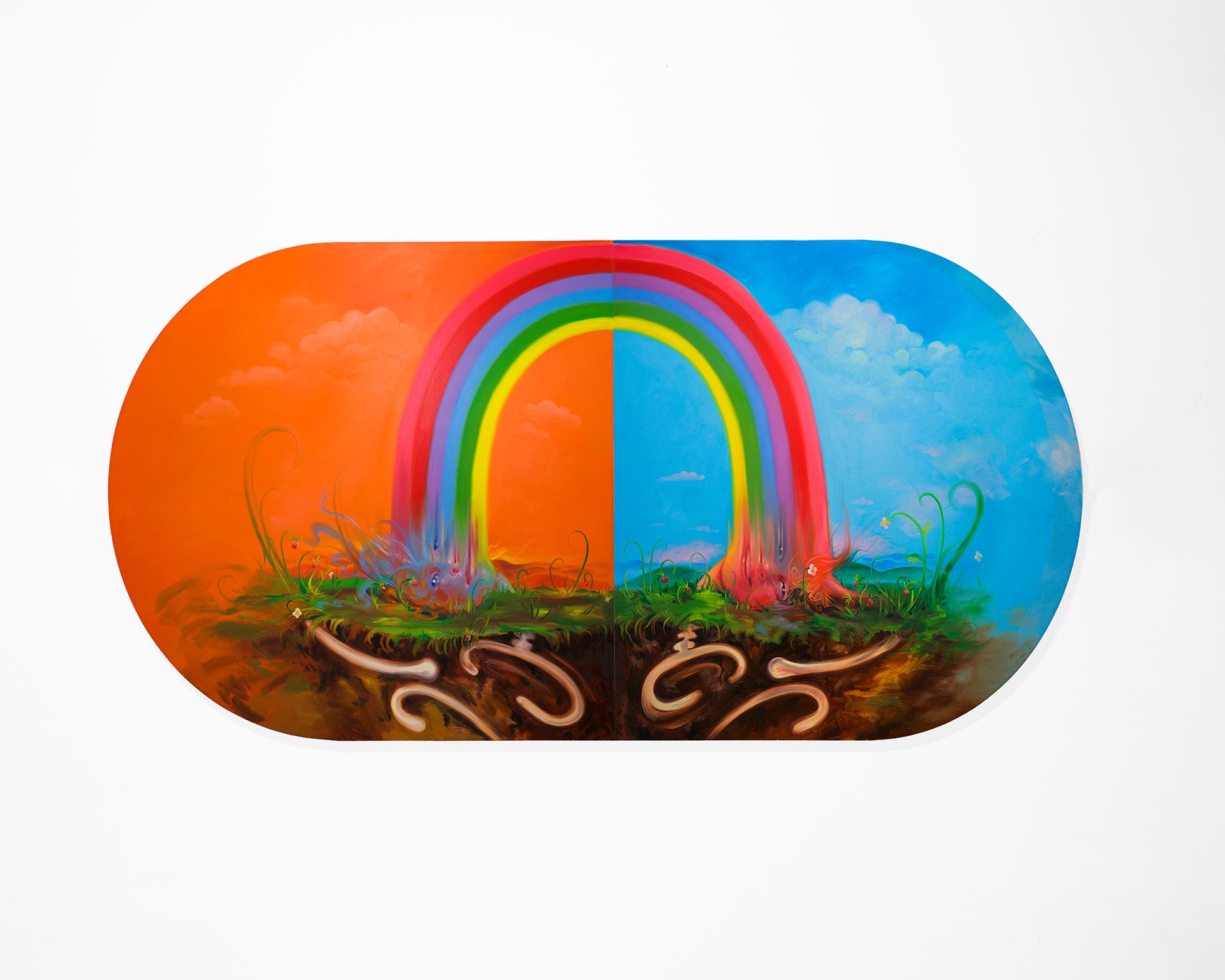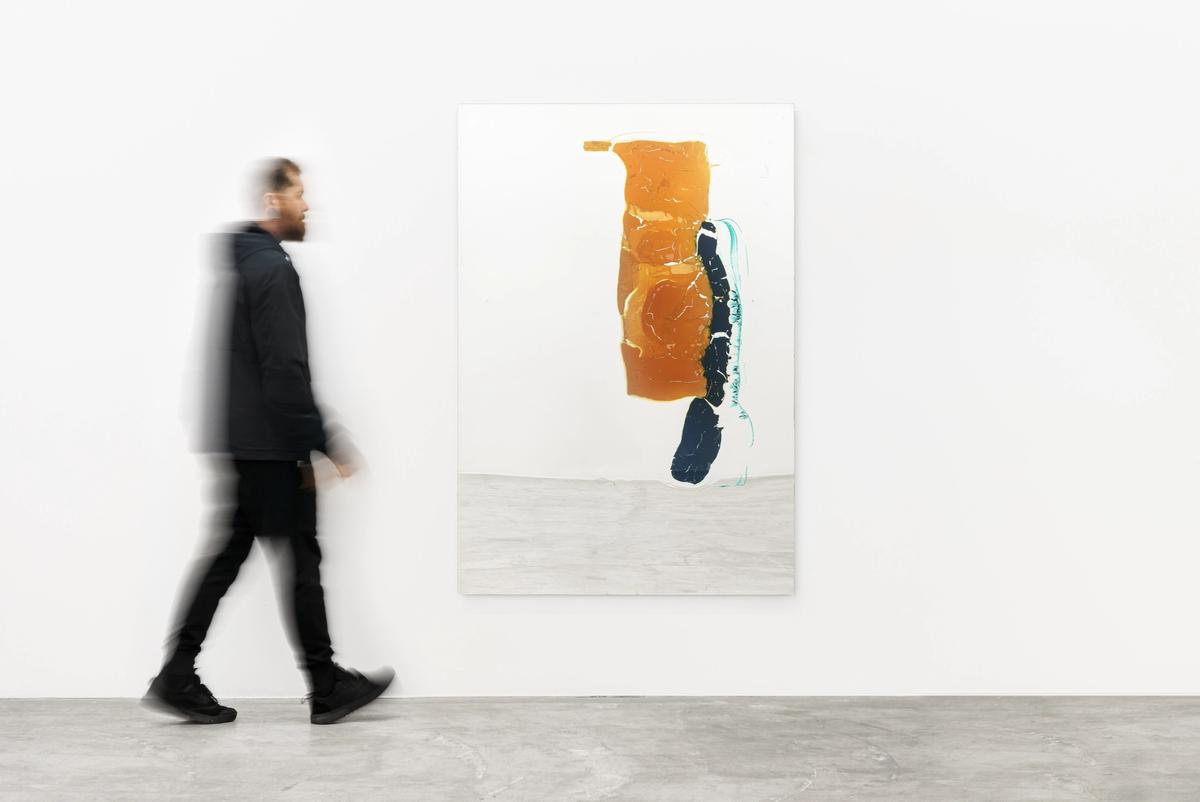Carlito Carvalhosa: Matter as Image, Works from 1987 to 2021
Until 18 June at Galeria Nara Roesler, 511 West 21st Street, Manhattan
The first posthumous exhibition devoted to the Brazilian artist Carlito Carvalhosa honours his prolific and diverse practice, which ranged from abstract paintings to ceramics and multimedia sculptures made from diaphanous wax and other materials. Carvalhosa’s oeuvre is united by its minimal but rhythmic approach, seen in pieces like Untitled (P08/03) (2003), in which the artist has amalgamated resin, grease and oil on a mirrored surface, creating an intense viscous composition. Carvalhosa was one of the founding members of a Brazilian art collective called Casa 7, formed in São Paulo in the 1980s alongside the artists Fábio Miguez, Paulo Monteiro and Rodrigo Andrade, whose work shares a similar aesthetic. He was also the first living Brazilian artist to have a solo show at the Museum of Modern Art in New York in 2011, presenting the sublime installation Sum of Days that engulfed the museum’s atrium with translucent cloth fitted with ambient noise that was recorded then played back during the exhibition. The Nara Roesler exhibition has been organised in collaboration with the curator Luis Pérez-Oramas and the late artist’s estate.

Hayley Josephs, Capsule (2022). Courtesy of the artist and Jack Barrett.
Haley Josephs: Passages
Until 7 May at Jack Barrett, 89 Franklin Street, Manhattan
In her latest, luminous paintings, New York-based artist Hayley Josephs portrays figures in various states of birth, decay and transcendence in a palette whose predominant hue is rainbow. The works vibrate with chromatic intensity, so much so that, in the gallery’s basement, they actually come off the wall—two of the paintings in the show feature a slide and a staircase projecting from the canvas to the gallery floor. The canvases themselves are at once jubilant and macabre, a duality perhaps most extremely exemplified in Capsule (2022), a massive painting in the shape of a medical capsule with a rainbow stretching between its orange and blue halves. At either end of the rainbow is the apparently severed head of a figure staring languidly out at the viewer. Josephs appears to be channelling some of the Surrealist imagery with which so many rising figurative painters seem smitten, but with a fairly sharp edge of contemporary gender politics. Particularly in light of this week’s leaked draft of the US Supreme Court’s decision regarding Roe v. Wade, it is difficult not to see these lavish, heroic paintings of female figures dying and giving birth as full-throated assertions of women’s rights to govern their bodies.

Lorenza Böttner and Johannes Koch, Untitled (1983). Private Collection, All rights reserved.
Lorenza Böttner: Requiem for the Norm
Until 14 August at the Leslie-Lohman Museum of Art, 26 Wooster Street, Manhattan
The transgender Chilean-German artist Lorenza Böttner (1959-1994) suffered an accident at age eight that resulted in the amputation of both her arms. She rejected prosthetics and left specialised education to enroll in art school, where she began working with her mouth and feet to create paintings and drawings that aimed to devictimise her body and challenge the perception of disabled people as desexualised beings. Böttner said she became an “exhibitionist” as a result of her handicap and staged hundreds of live performances in the US and Europe during her lifetime, some that are shown in videos overlaid with sage words from the artist on radical self-acceptance. Beyond carving a space for trans and disabled artists, Böttner’s trajectory tells the universally uplifting adage that art is an instrument for self-actualisation. “It isn’t enough to think of an idea or just believe in an idea, one must live it,” Böttner wrote in a statement on her artistic development. “The artist can achieve this action by creating.”


